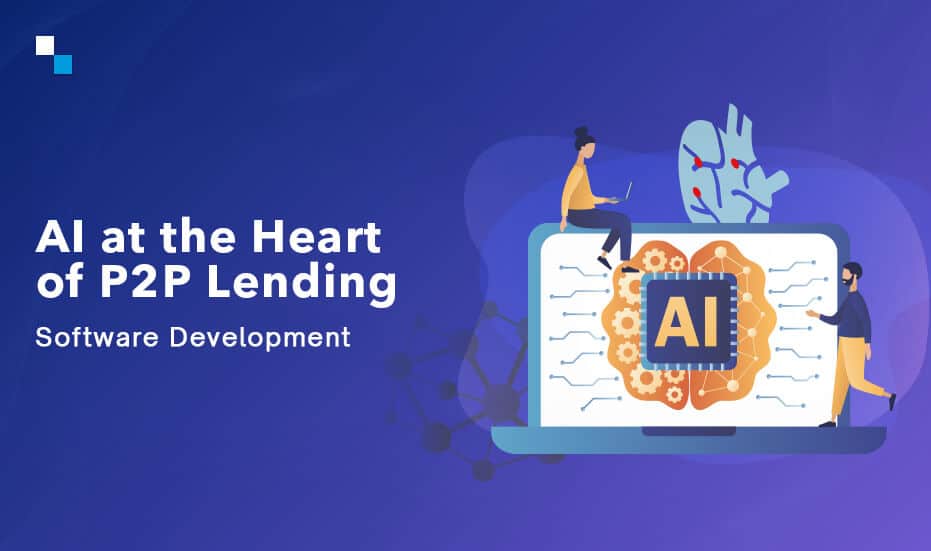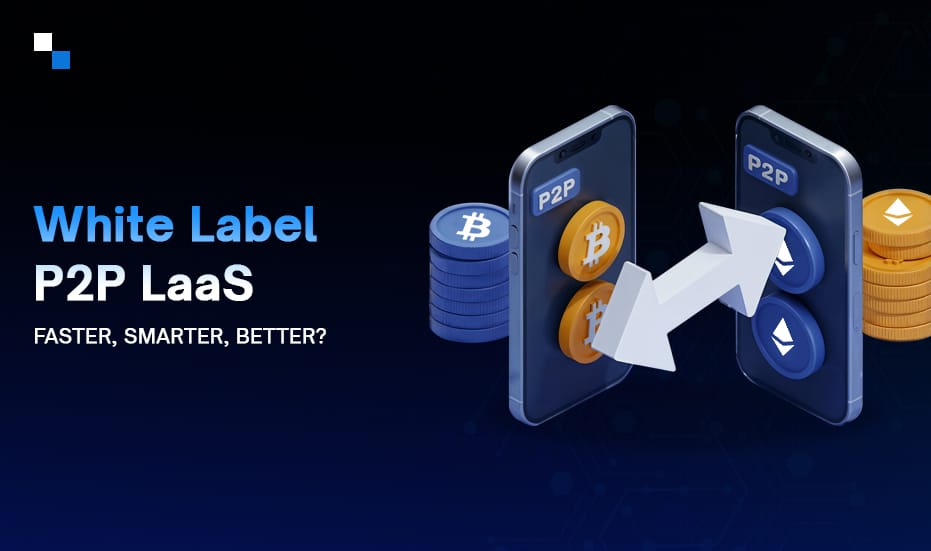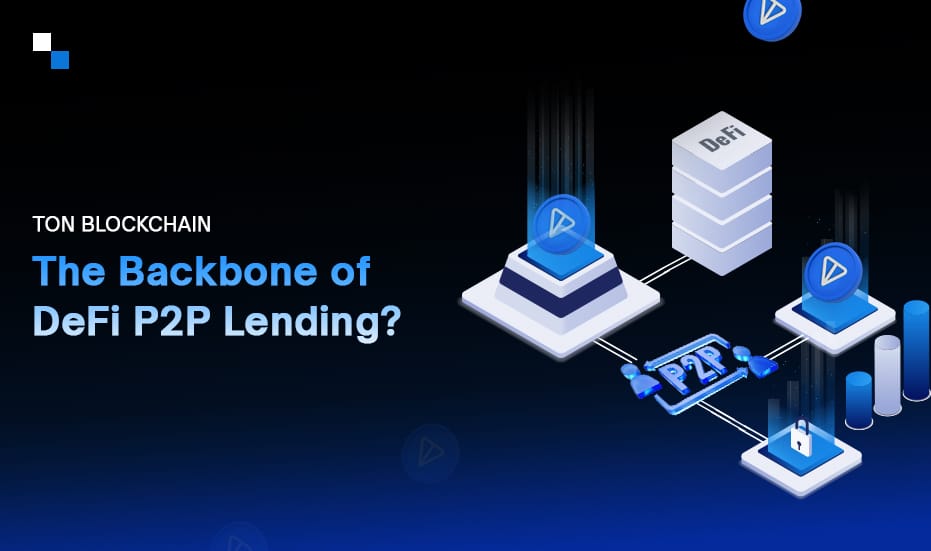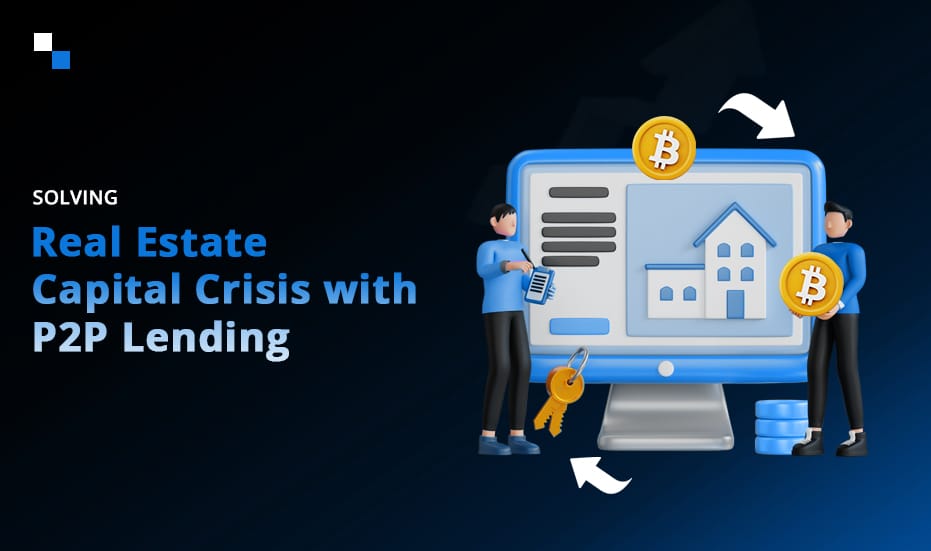
Maximizing Profits With Crypto Arbitrage Bot in 2024
August 14, 2023
Fiat-Collateralized Stablecoins: The Next Big Thing in The Stablecoin Development Space
August 16, 2023Blockchain technology and artificial intelligence (AI) have recently come together to create ground-breaking solutions that are changing the financial environment. Peer-to-peer (P2P) crypto lending software driven by AI is one such ground-breaking innovation that combines the strength of decentralized blockchain networks with the wisdom of AI algorithms to revolutionize lending and borrowing in the cryptocurrency space.
The Evolution of P2P Lending Platform Software
Peer to Peer lending platform software help connect borrowers and lenders directly, bypassing intermediaries such as banks. These platforms leverage blockchain technology to streamline loan transactions, resulting in faster approval times, lower fees, and better transparency. Borrowers can request loans by creating a profile and filling out an application on the portal. Lenders can then evaluate loan applications and fund loans based on their risk tolerance and investment objectives. The digital money is transferred to the borrower’s account once the loan is approved. The borrower is then accountable for returning the loan to the lender, together with interest. For each loan transaction, the platform often charges a nominal fee.
In the world of cryptocurrencies, this concept has evolved with the integration of blockchain technology, enabling transparent and secure transactions. However, the integration of AI takes this evolution to new heights.
| The global peer-to-peer (P2P) lending market was valued at $67.93 billion in 2019 and is expected to increase at a CAGR of 29.7% from 2020 to 2027, reaching $558.91 billion by 2027. |
The Role of AI in P2P Crypto Lending
The role of AI in P2P crypto lending is pivotal, transforming the lending landscape by introducing intelligence and automation. AI’s integration empowers P2P lending platform software with advanced algorithms and data-driven insights, revolutionizing key aspects of the lending process:
- Risk Assessment and Scoring
AI algorithms analyze vast data sets to assess the creditworthiness of borrowers. By considering factors like transaction history, wallet activity, and market trends, AI provides a more comprehensive and accurate risk assessment, reducing the potential for defaults. - Automated Decision-Making
AI enables automated lending decisions based on predefined criteria. This not only expedites the lending process but also reduces human bias, ensuring objective and consistent decisions. - Predictive Analysis
AI examines historical data and market trends to predict future value fluctuations of cryptocurrencies. This data aids lenders in making informed decisions about lending terms, interest rates, and loan durations. - Fraud Detection
AI algorithms detect patterns indicative of fraudulent activities. By analyzing transactions and user behavior, AI enhances security, safeguards lenders, and maintains the platform’s integrity. - Portfolio Management
AI optimizes lenders’ portfolios by suggesting the best allocation of funds across various loans. This diversification minimizes risk and maximizes potential returns. - Real-time Monitoring
AI continuously monitors market shifts, cryptocurrency values, and borrower behavior. This ensures proactive adjustments to lending strategies, enhancing overall performance. - Customer Interaction
AI-powered chatbots enhance the user experience by providing instant assistance, answering queries, and guiding borrowers through the lending process, thus improving customer satisfaction. - Data-Driven Insights
AI generates actionable insights from large datasets, aiding platform operators in refining lending models, adapting to market dynamics, and identifying areas for improvement. - Real-time loan approvals
Peer to Peer lending platform software can be used to approve loans in real-time. This can help borrowers to get the funds they need quickly and easily. - Crowdsourced lending
AI can be used to match borrowers with lenders who are willing to lend to them. This can help borrowers to get the best possible interest rates on their loans. - Automated loan repayments
AI can be used to automate loan repayments. This can help borrowers to stay on top of their payments and avoid late fees.
Enhance P2P Efficiency by embracing AI-integrated lending software solutions
Schedule Free DemoUnderstanding the Additional Challenges in P2P Lending and How AI Provides The Solutions
By leveraging AI’s capabilities in data analysis, automation, risk assessment, and fraud detection, P2P lending platforms can enhance their efficiency, security, transparency, and user experience. As technology evolves, AI-driven P2P lending platform software is positioned to deliver greater value, transforming the lending landscape for borrowers and lenders alike.
P2P lending, while innovative, presents its own set of challenges. Fortunately, AI offers solutions that address these challenges effectively:
1. Lack of Collateral and Regulations
Challenge: Many crypto borrowers lack collateral, and regulations vary globally.
AI Solution: AI-powered smart contracts can ensure regulatory compliance, automate repayment schedules, and handle collateral-less loans through reputation-based scoring.
2. Fraud and Security
Challenge: The pseudonymous nature of cryptocurrencies can lead to fraudulent activities.
AI Solution: AI identifies unusual patterns and behaviors, detects fraud, and enhances the security of transactions and user identities.
3. Lack of Transparency
Challenge: Borrowers and lenders may lack transparency about the lending process and terms.
AI Solution: Smart contracts, powered by AI, execute transactions transparently, automatically enforcing loan terms and enhancing trust among participants.
4. Data Privacy Concerns
Challenge: Handling sensitive financial data securely is critical for user trust.
AI Solution: AI-powered Peer to Peer lending platform software employs encryption and anonymization techniques, ensuring data privacy while allowing necessary insights for risk assessment.
5. Scalability and Efficiency
Challenge: As platforms grow, ensuring efficient and scalable operations becomes crucial.
AI Solution: AI automates processes, streamlining loan origination, verification, and decision-making, enabling platforms to handle increased transaction volumes.
6. User Experience and Customer Support
Challenge: Providing a seamless experience and responsive customer support is essential.
AI Solution: AI-powered chatbots offer real-time assistance, answer queries, and guide users through the lending process, enhancing the overall user experience.
Steps for Developing a P2P Lending Platform Software
Developing a Peer to Peer lending platform software requires careful planning, design, development, and testing. Here are the steps involved in creating a P2P lending platform:
- Market Research and Conceptualization
- Understand the target market and identify the specific needs and pain points of potential users.
- Define the core features of your P2P lending platform, such as user roles (borrowers, lenders), loan types, interest rates, and repayment terms.
- Choose the Technology Stack
- Decide on the programming languages, frameworks, and databases that will best suit your platform’s requirements.
- Design and User Experience (UX)
- Create wireframes and mockups of the user interface (UI) to visualize the platform’s layout and features.
- Focus on intuitive navigation, responsive design, and user-friendly interfaces for borrowers and lenders.
- Development
- Develop the front-end and back-end components of the platform.
- Implement user authentication and verification processes to ensure security.
- Integrate payment gateways to facilitate transactions between borrowers and lenders.
- Build the loan matching algorithm that connects borrowers with suitable lenders based on predefined criteria.
- AI Integration
- If incorporating AI, integrate machine learning algorithms for risk assessment, credit scoring, and automated decision-making.
- Smart Contracts
- Use blockchain technology, and develop smart contracts to automate loan agreements, fund transfers, and repayment schedules.
- Regulatory Compliance
- Research and comply with local financial regulations and legal requirements related to P2P lending and cryptocurrency operations.
- Security Measures
- Implement robust security measures to safeguard user data, transactions, and platform integrity.
- Utilize encryption, secure sockets layer (SSL), and two-factor authentication (2FA).
- Testing
- Conduct thorough testing of the platform’s functionality, security, and user experience.
- Perform stress testing to ensure the platform can handle a significant number of users and transactions.
- Beta Testing and Feedback
- Launch a beta version of the platform for a limited user base to gather feedback and identify any remaining bugs or issues.
- Deployment and Launch
- Once all issues are addressed, deploy the P2P lending platform to a production environment.
- Launch the platform publicly and promote its availability to potential borrowers and lenders.
- Monitoring and Maintenance
- Continuously monitor the platform’s performance, security, and user engagement.
- Regularly update and maintain the software to introduce new features and improvements based on user feedback and market trends.
Real-World Examples of AI-integrated Peer to Peer Lending Platform Software
AI-integrated P2P lending platform software has demonstrated its potential in transforming the lending landscape. Here are some real-world examples:
- YouHodler
YouHodler utilizes AI algorithms to assess the risk of borrowers and set loan terms. Their AI-driven Loan-to-Value (LTV) algorithms adjust collateral requirements based on real-time market conditions, enhancing efficiency and borrower experience. - CoinLoan
CoinLoan employs AI for risk assessment and predictive analytics. Their platform uses AI models to estimate the probability of default, aiding lenders in making informed decisions about lending terms and interest rates. - SALT Lending
SALT Lending employs AI to automate loan servicing and optimize loan terms. Their AI algorithms analyze collateral, market data, and borrower behavior to suggest adjustments in loan terms to maintain collateral coverage. - Nebeus
Nebeus employs AI for lending and borrowing decisions. Their platform uses AI algorithms to assess borrowers’ profiles, determine optimal interest rates, and manage the risk associated with lending.
- Vauld
Vauld leverages AI to assess risks and set interest rates dynamically. The AI-driven approach ensures competitive rates for borrowers and profitable returns for lenders.
Wrapping Up
The development of an AI-powered P2P crypto lending platform marks a significant step toward reshaping the financial landscape. The fusion of advanced AI algorithms with the decentralized nature of blockchain technology presents a groundbreaking solution that enhances efficiency, accuracy, and accessibility in the lending and borrowing ecosystem. By automating risk assessment, enabling predictive analysis, and offering seamless user experiences, these platforms are poised to democratize access to finance, promote financial inclusion, and redefine the way individuals and businesses interact with cryptocurrencies. As technology continues to evolve, the future of finance holds exciting possibilities as AI-powered P2P lending platform software plays a pivotal role in creating a more accessible, efficient, and intelligent financial ecosystem.
Developing a Peer to Peer lending platform software is a complex process that requires expertise in software development, blockchain, AI integration, and financial regulations. Collaboration with Antier’s skilled development team will ensure a successful and compliant platform launch. What are you waiting for? Let’s talk!



